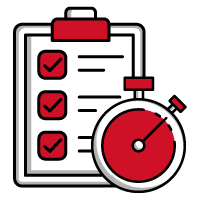VNAs Provide Versatile Measurement Capabilities
November 08, 2017
 |
Vector network analyzers (VNAs) were once associated mainly with RF/microwave frequencies, although they have gained popularity in recent years at audio frequencies. They are unique among electronic measuring instruments in their capabilities to measure circuits as networks and to understand the transmission and reflection of signals through those networks and how changes in impedance can impact the transfer of energy through those networks. The most popular commercial VNA configurations are available with two or four ports, enabling the measurement of a device’s or circuit’s performance in terms of linear network scattering (S) parameters or its nonlinear behavior. VNAs are complex test systems, but a review of some of their essential measurement capabilities can help in selecting an instrument with the features needed for a particular set of applications.
Why Use A VNA?
A Vector Network Analyzer measures differences between incident and reflected test port power. It is useful for characterizing a wide range of components and devices, including passive circuits such as couplers, filters, cables, antennas, delay lines, and attenuators, and active circuits such as amplifiers, switches, modulators, and oscillators. A VNA can plot the magnitude and phase responses of a device under test (DUT) as functions of frequency, using different stimulus responses, such as continuous-wave (CW) or modulated test signals to most closely re-create the types of signals occurring in an actual application. Unlike many test instruments, such as spectrum analyzers or oscilloscopes, VNAs are designed with their own sources of test-port power, typically frequency synthesized sources covering the full frequency range of the VNA.
VNAs are characterized by their frequency ranges, dynamic ranges, and number of ports, with some commercial instruments offering extended-frequency capabilities well into the millimeter-wave frequency range. VNAs are implemented with fairly standard function blocks, including a synthesized source of test signals, an S-parameter test set, signal switching and routing, and a measurement receiver, typically with high-resolution samplers at each measurement port to provide extremely fine data points. The dynamic range is the difference between the receiver noise floor and the compression point (such as 0.1 or 1-dB) of the highest-level signal that can be measured at the receiver’s input ports. A VNA with four-port architecture performs measurements of power for the four S-parameters at those ports (S21, S12, S11, and S22) and at the characteristic impedance, which is typically 50 Ω at higher frequencies.
How Do They Compare?
VNAs differ in many performance parameters, including frequency and dynamic ranges, but also in the number of available measurement data points, the measurement speed, and accuracy. VNAs employ different self-correction routines to process data captured from the test ports, and the effectiveness of these correction algorithms can impact the measurement accuracy. Increased accuracy also results from capturing a large number of data points, although more test data also means longer measurement times.
As an example, the Anritsu 37397C can make swept-frequency VNA measurements across an extraordinarily wide frequency range of 40 MHz to 65 GHz. It can capture different data points from 3 to 1601 points but with considerable differences in measure time, from fractions of a second to several seconds. This is a tradeoff, between data points and measurement speed, that will be found in any commercial VNA and is more of a concern for automated measurements in which a great deal of test data will be captured.
Each VNA can be qualified in terms of its test port power as a function of frequency, which is an indication of the type of device under test (DUT) that can be readily characterized with that VNA. When higher test-port power is needed, for example, an external test amplifier may be needed. As an example, the Keysight Technologies E5072A VNA is a two-port instrument available in versions from 30 kHz to 4.5 GHz or 8.5 GHz. Test port power of as much as +10 dBm is available to 8.5 GHz, and it can be attenuated to -85 dBm for low-level measurements on active devices. In addition to controlling internal test signal power, many VNAs provide the capability to control the frequency tuning of one or more external test signal sources, as might be required when performing measurements on frequency mixers.
While traditional VNAs include a full complement of controls and a display screen to show measurement results in various formats, including x-y plots of magnitude and phase versus frequency, Smith charts of S-parameters, and polar impedance plots, modular test instruments take advantage of the computing and display capabilities of modern personal computers (PCs) to show test results on a computer’s display screen. The Omicron Lab Bode 100 is a modular instrument that combines a VNA, frequency response analyzer, and impedance analyzer with software and a Universal Serial Bus (USB) connection to a PC to perform measurements from 1 Hz to 40 MHz. With the aid of the software and the additional computer screen, it can show test results in the many display formats available on the much larger VNAs.
Remember Those Standards
When selecting a VNA for its frequency range, dynamic range, or even measurement speed, measurement accuracy should never be taken for granted and high accuracy is supported by proper calibration. A variety of VNA calibration approaches are available, based on different standards, such as short-open-load-thru (SOLT) and thru-reflect-line (TRL) calibrations. VNA suppliers typically offer calibration standards as options for their instruments and will work with a user to determine the best calibration approach for a given instrument and type of DUT measurement.
Even the simplest VNA is a complex, computer-managed system that requires skill and care in its operation for the best results. Regular calibration is a key step in maintaining high accuracy and a well-maintained test site can help ensure a safe and stable operating environment for a VNA. This blog is meant only as an introduction to the most fundamental features of a high-frequency VNA. No matter the frequency range, it is an elegant and powerful test instrument that is an invaluable assistant in the design of both active and passive circuits.
For more information on the models mentioned here or on an assortment of VNAs from a wide range of suppliers, downloadable data sheets and additional information are available by contacting Axiom Test Equipment’s sales department at sales@axiomtest.com or by calling 760-806-6600.
Back to BLOG








